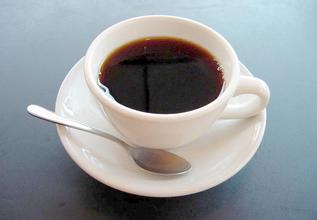How to correctly use bean grinder to help coffee extraction
Now more and more people are beginning to fall in love with coffee and coffee life. Baristas are constantly studying how to make better coffee. They constantly try the different flavors of coffee beans in different places, the different tastes brought by various brewing utensils, and the personality shown by various brewing techniques, but often ignore the importance of bean grinders to all this. Among the factors that determine the taste of coffee brewing, "beans", "grinding" and "machine" are hardware factors, and "technology" is software factors.
So how to choose a grinder to grind your coffee and make your coffee more delicious? Today, some methods of coffee are sorted out here for your reference in the future.
Methods and steps
1: uniformity
The coarser coffee particles are easily underextracted, while the finer particles are overextracted in advance, so the coffee powder with a larger span of grinding thickness can taste more turbid and irritating smells. When the coffee powder with the same size and similar shape is used for extraction, the taste becomes brighter and stronger, and the performance of flavor characteristics is clearer and consistent.
2: fine powder content
Coffee powder close to flour can easily be overextracted or even dissolved in water, thus affecting the extraction taste of coffee. The more fine powder, the more easily coffee is over-extracted, and the more bitter the taste is, the more mixed it is. When making espresso, the fine powder will first be washed out by the water and into the cup. If extracted properly, the thick oil will hold up the fine powder, and the fine powder will float on the surface of the oil, forming a beautiful "tiger spot". But "tiger spot" does not represent the taste of espresso. The production of fine powder can be reduced by choosing a better bean grinder or using a sieve. But if there is no fine powder at all, the brewed coffee will also lack a sense of hierarchy.
3: calorific value
The grinding plate of any bean grinder will generate heat in the grinding process, and the heating of coffee powder will accelerate the oxidation process and accelerate the volatilization of aroma, resulting in the weakening of coffee flavor after brewing. The calorific value of the cutter head depends on the size of the grinding plate, the material used, the structure of the knife, the fineness of grinding, the speed of the motor, the hardness and texture of coffee beans and many other factors.
4: static electricity
Generally speaking, the finer the grinding, the faster the grinding machine, the stronger the static electricity; the internal material is plastic, and the lower powder mouth does not use the bean grinder designed to reduce static electricity, so the static electricity is stronger; the coffee beans with rich oil and deep roasting are ground, the static electricity is stronger. When grinding the Italian bean mill, the fine powder often appears as a ball, which affects the density of the powder, resulting in uneven extraction, while the iron absorber at the outlet of the single bean mill absorbs silver skin and fine powder through electrostatic adsorption. to help reduce the taste and odor of excessive extraction.

Important Notice :
前街咖啡 FrontStreet Coffee has moved to new addredd:
FrontStreet Coffee Address: 315,Donghua East Road,GuangZhou
Tel:020 38364473
- Prev

Common sense of coffee roasting
1. The definition of roasting so-called coffee roasting (coffee roasting) refers to the heating of raw beans to promote a series of physical and chemical reactions inside and outside of coffee beans, and in this process to produce a variety of sour, bitter, sweet and other flavors of coffee, forming mellowness and hue, and converting raw beans into dark brown beans. two。 The importance of baking depends on the factors that affect the taste of a cup of coffee
- Next

Coffee fans must know coffee common sense coffee etiquette
Coffee etiquette [how to get a coffee cup] Coffee drunk after a meal is usually served in a pocket cup. The ear of this kind of cup is so small that you can't get your fingers out. But even if you use a larger cup, don't put your finger through the ear and carry the cup. The correct way to hold a coffee cup is to hold the handle of the cup by your thumb and forefinger and then pick up the cup. [how to sugar coffee] give coffee
Related
- Beginners will see the "Coffee pull flower" guide!
- What is the difference between ice blog purified milk and ordinary milk coffee?
- Why is the Philippines the largest producer of crops in Liberia?
- For coffee extraction, should the fine powder be retained?
- How does extracted espresso fill pressed powder? How much strength does it take to press the powder?
- How to make jasmine cold extract coffee? Is the jasmine + latte good?
- Will this little toy really make the coffee taste better? How does Lily Drip affect coffee extraction?
- Will the action of slapping the filter cup also affect coffee extraction?
- What's the difference between powder-to-water ratio and powder-to-liquid ratio?
- What is the Ethiopian local species? What does it have to do with Heirloom native species?

